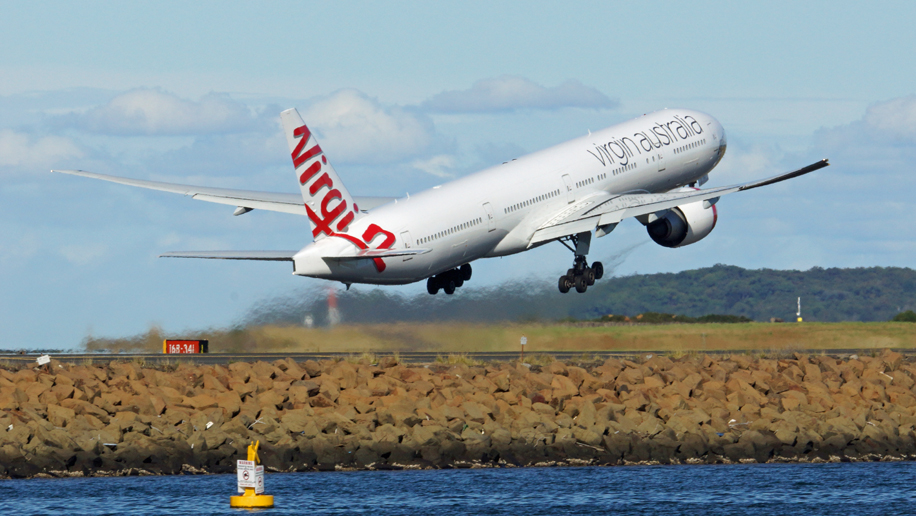So what does all this mean for you, the fare-paying passenger? The airlines’ ACCC filing makes for rather time-consuming reading, so we’ve broken down the key points for you here.
Cheaper tickets
First of all, it will allow the airlines to make more seats available at lower prices to passengers flying between Australia and the UK/Ireland via Hong Kong and Los Angeles.
“Under their current arm’s length codeshare, each airline has a disincentive to make available to the other codeshare inventory in lower fare buckets if it considers that there may instead be the opportunity to sell those seats itself as it looks to solely maximise the yield on its own services rather than to fill up its available seats through the supply of codeshare inventory, which brings in only a small amount of revenue,” the airlines say.
“When it makes these calculations, it does so without full information and may miss opportunities to fill otherwise empty seats with connecting passengers. With joint management of inventory, the Applicants will be transparent with each other about demand for their operated services and opportunities for discount connecting fares to stimulate demand.”
Product enhancements
Passengers can also look forward to “[p]roduct enhancements in both the airport and on-board”. This will be achieved by “aligning baggage allowance, seat allocation, meal requests, check-in and boarding processes and lounge access”. In addition, there will be “[v]aluable improvements to reciprocal frequent flyer arrangements, lounge access and status recognition for passengers flying on Virgin Australia and Virgin Atlantic services.
“Travellers expect to have consistent service on Virgin-branded airlines and are often confused when two Virgin branded airlines operate at an airport and they are unable to utilise the airport services of one airline or access their lounge facilities,” the airlines said in the filing.
Better scheduling
Schedules will be improved, with reduced connection times and “an increased likelihood” of new services, frequencies and additional capacities through aircraft up gauges.
Now, customers travelling on each of the Melbourne-Hong Kong and Sydney-Hong Kong routes experience a layover of between six to seven hours at Hong Kong airport, the airlines say in the ACCC filing. This results in an elapsed journey time of 28 hours and 30 minutes, from SYD/MEL-LHR, which is “less convenient than travel times via other mid-points such as Singapore, and can be especially unappealing for corporate travellers”.
For services to Europe via Los Angeles, the airlines add, passengers tend to stop-over instead of connecting same day.
The airlines say they will “work together to make the timing as attractive as possible to facilitate holiday stopovers at Los Angeles”.
Improved Hong Kong and LA lounge access
In Hong Kong, Virgin Atlantic currently departs from the main terminal in Hong Kong and Virgin Australia operates out of the Midfield Terminal alongside Hong Kong Airlines, the ACCC filing says. Virgin Atlantic uses the Plaza Premium (First) lounge in Hong Kong (Gate 1) and Virgin Australia uses the Hong Kong Airlines lounge.
“This poses a challenge to the overall customer experience as passengers assume one Virgin operation in Hong Kong,” the airlines say, adding that they will “explore possibilities for collocating operations in the main terminal and utilising the same lounge, providing a seamless ‘Virgin to Virgin’ experience.”
Los Angeles airport is undergoing significant modernisation and upgrade works initiated by Delta Airlines. Virgin Australia and Virgin Atlantic plan to “explore co-location of their lounges and other airport facilities as the development progresses”.
Frequent flyer benefits
The airlines say they already offer customers “significant benefits” through the reciprocal earn and redemption of loyalty points on each other’s services and the recognition of status and high value guests. However, under the proposed cooperation, they will invest in “valuable improvements” to their reciprocal loyalty benefits, which they say will benefit the millions of customers who are members of Velocity or Flying Club, Virgin Australia’s and Virgin Atlantic’s respective loyalty programmes.
The airlines say frequent flyers could benefit in the following ways:
- By extending the existing codeshare arrangements to all onwards connections in Australia and New Zealand and in the UK and Ireland, passengers will have more opportunities to earn points on each other’s code.
- Customers will be able to access greater status benefits, tier recognition, and greater ease of reward seat bookings and upgrades through the automation of rewards and tier status recognition through an online system.
- The airlines will introduce online points redemption facilities. Now, Virgin Australia and Virgin Atlantic do not have real-time access to each other’s redemption inventory, and members are required to make partner redemption bookings by calling the contact centre
- The airlines will introduce reciprocal tier bonus points earn on each other’s flights to reward high value members.
- The airlines also propose to implement a reciprocal points upgrade proposition on each other’s flights. This would be a “unique customer proposition” on the Australia to London route, which is not currently offered by any competitors.


